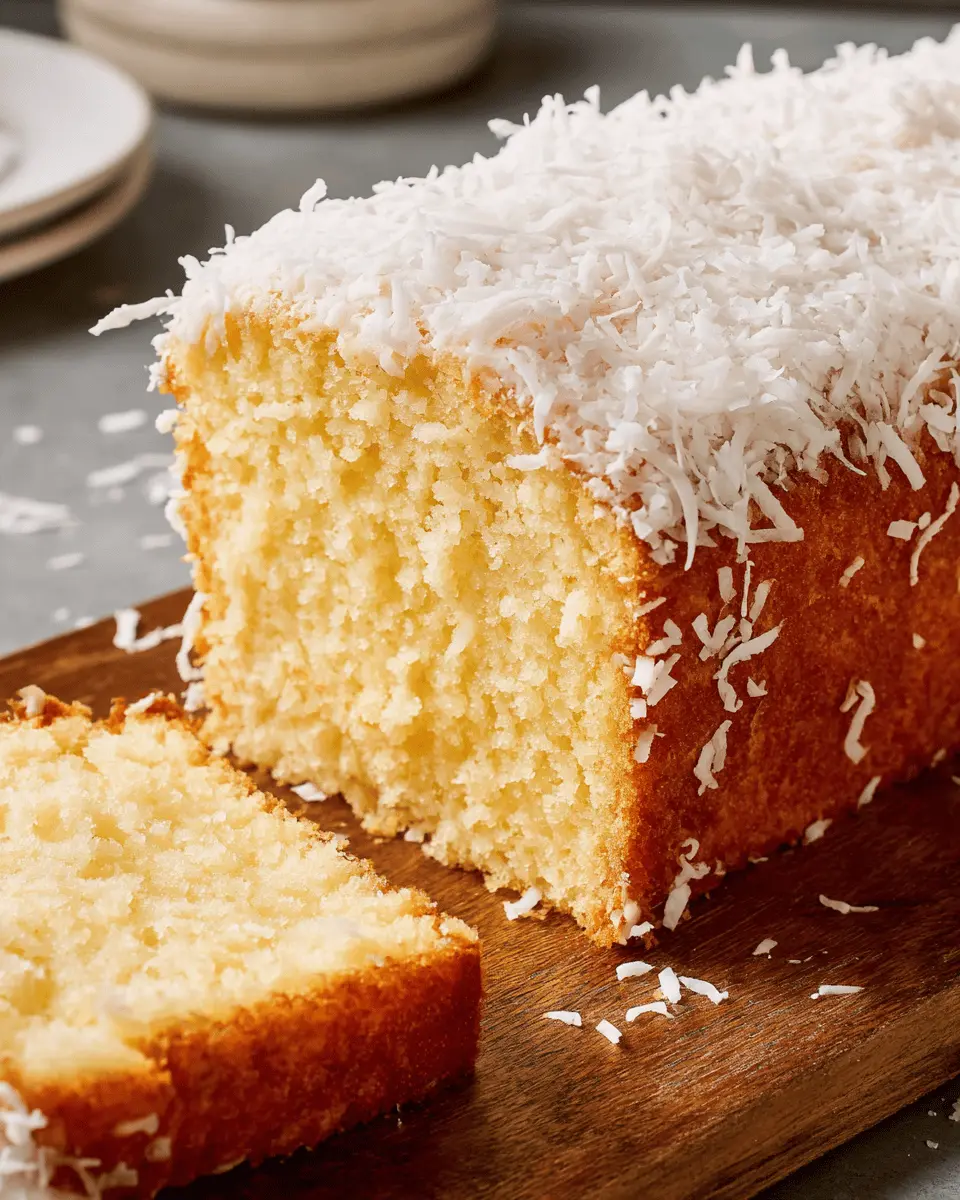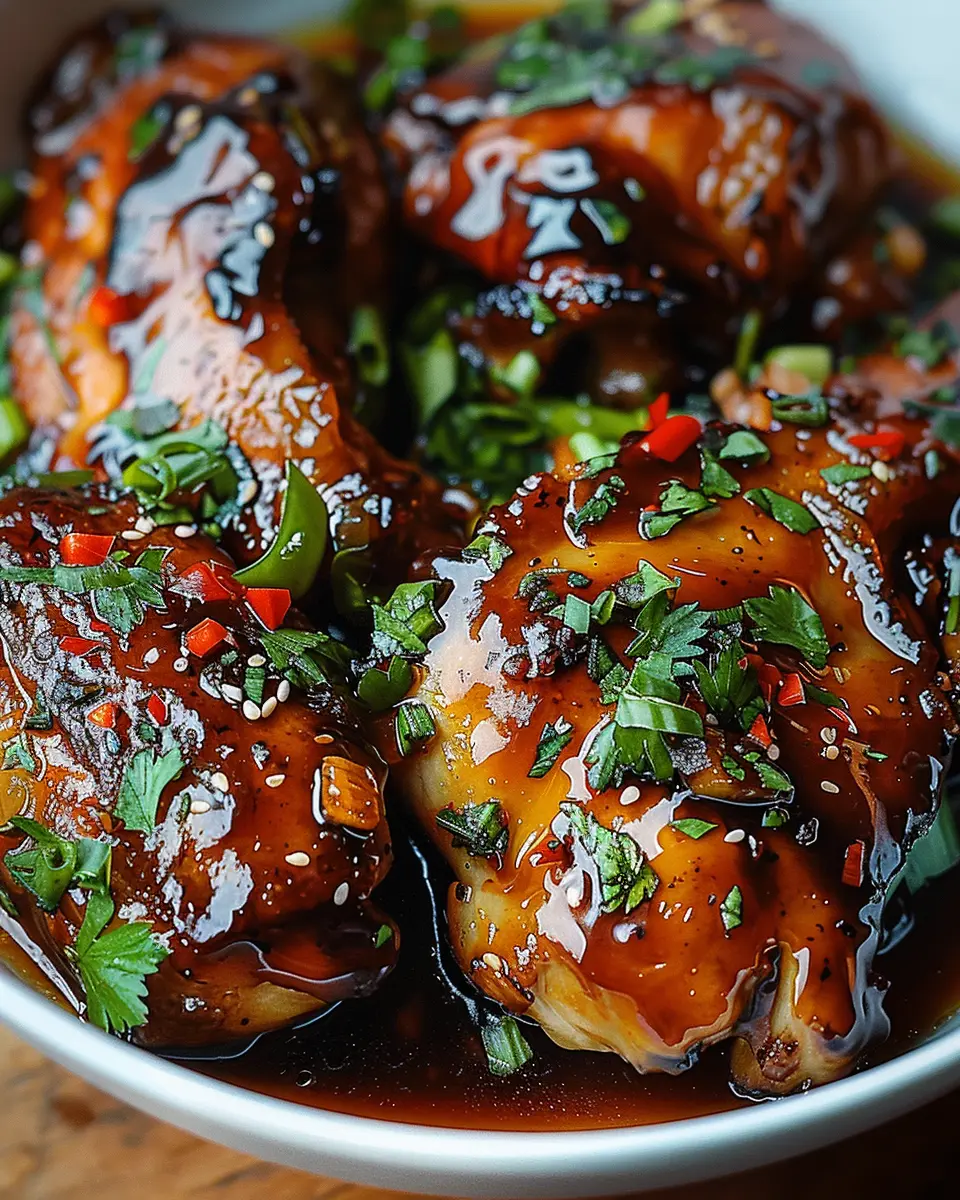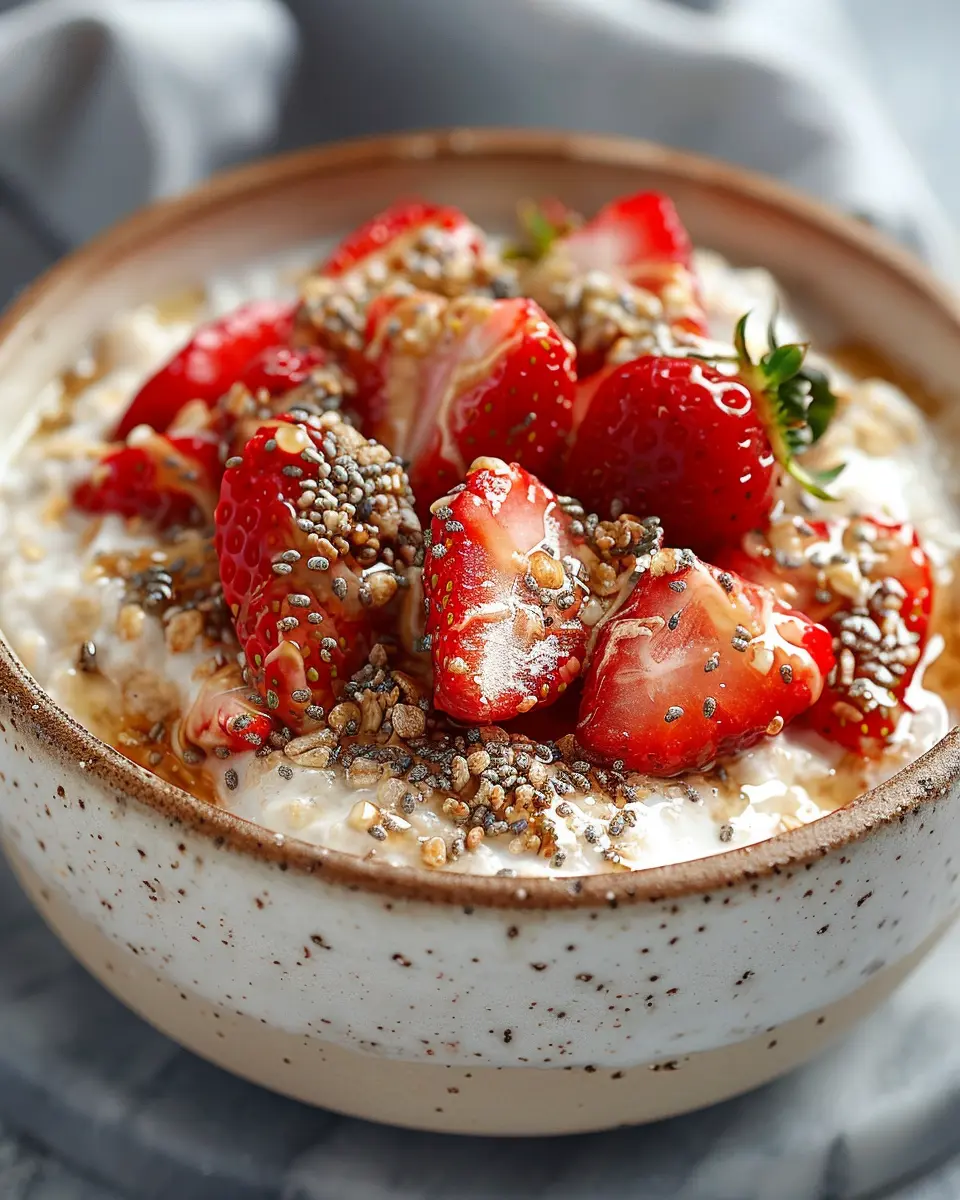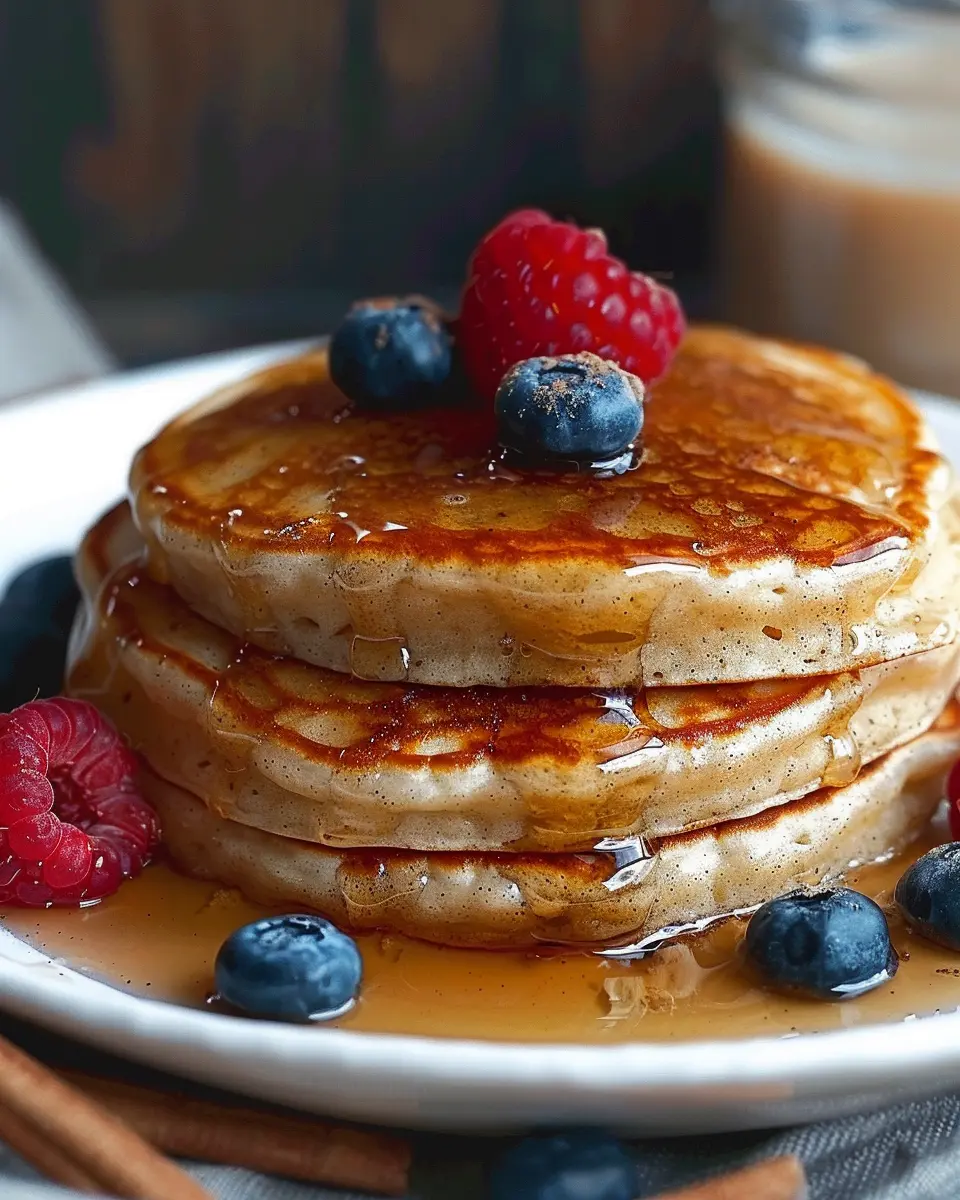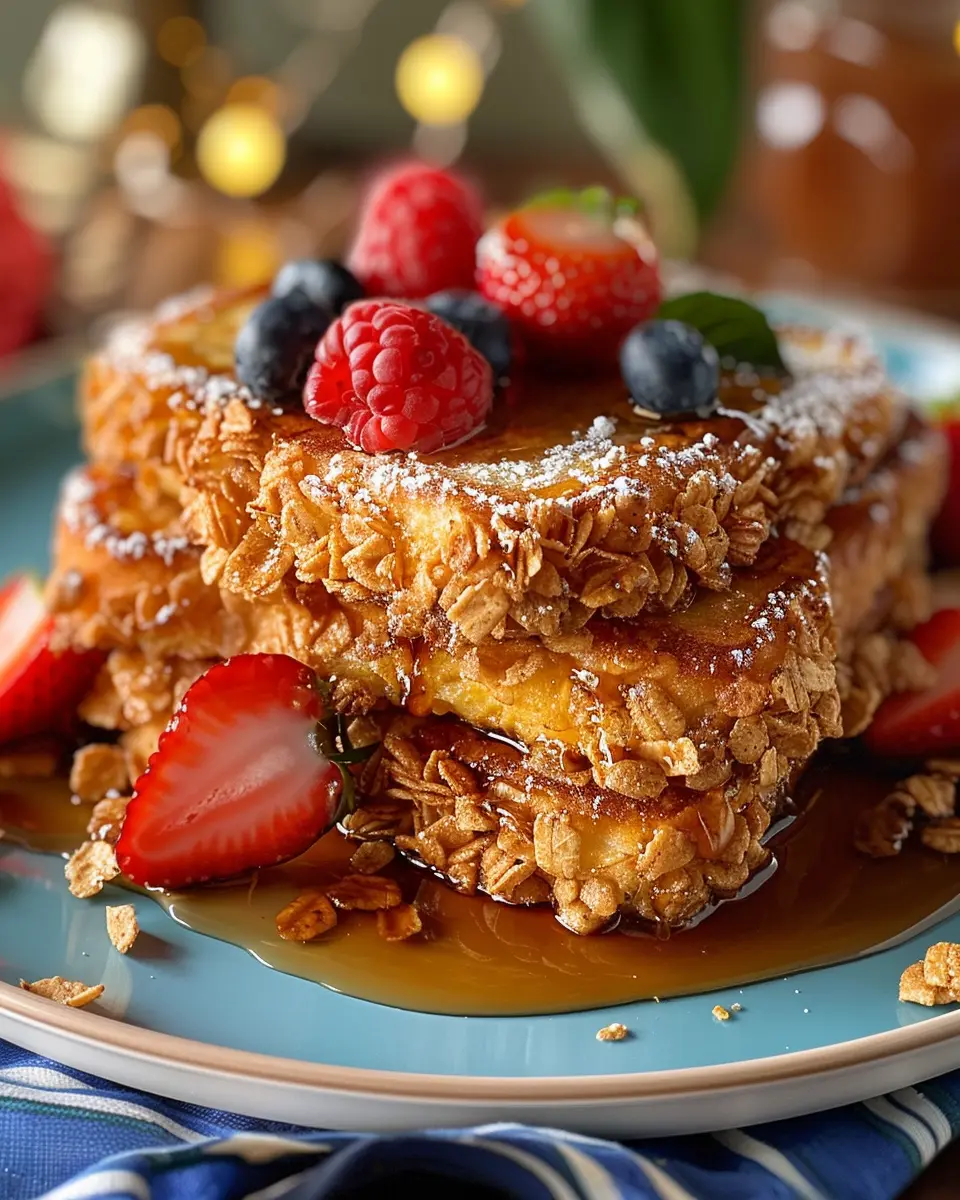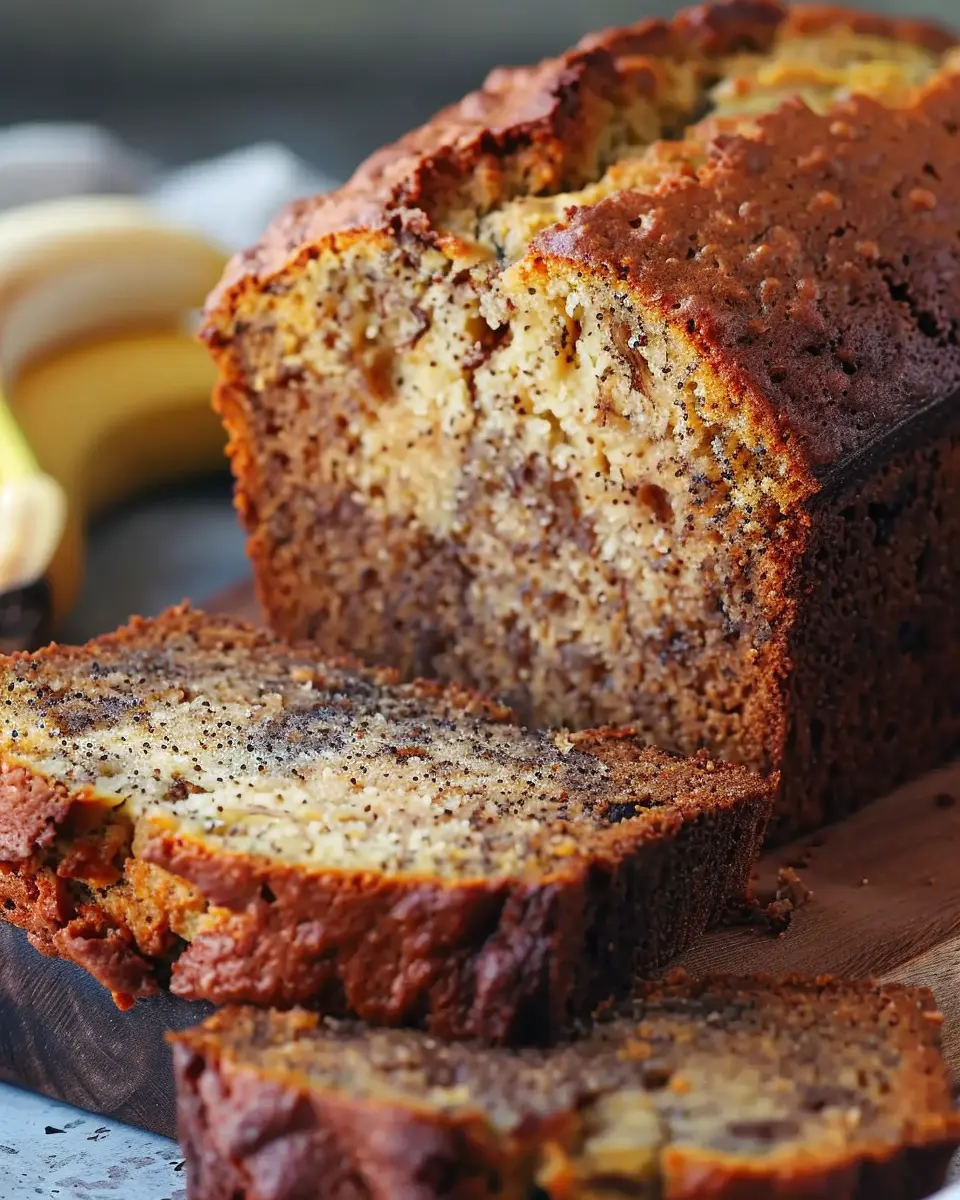Introduction to Coconut Pound Cake
Nothing says comfort like a homemade dessert, and coconut pound cake has earned its spot as a favorite among baking enthusiasts and casual cooks alike. Its dense, moist texture combined with a rich, tropical flavor creates a treat that’s not only delicious but also evokes memories of sun-soaked beaches and relaxing getaways. Whether you’re hosting a weekend brunch or simply satisfying a sweet tooth, this cake is the perfect companion.
Why is Coconut Pound Cake a Beloved Choice for Homemade Desserts?
The appeal of coconut pound cake lies in its simplicity and versatility. Here are a few reasons why it’s a go-to for many:
-
Rich Flavor: The addition of coconut provides a unique depth that transforms a standard pound cake into something truly special. Its subtle sweetness pairs well with coffee, tea, or even a refreshing glass of lemonade.
-
Easy to Make: One of the most attractive aspects is its straightforward recipe. With just a handful of ingredients, you can whip up a delightful treat without needing advanced baking skills. It’s perfect for young professionals juggling busy schedules and seeking a rewarding cooking experience.
-
Customizable: While the classic version of coconut pound cake is loved as is, you can easily play around with flavors. Think about adding a hint of lime zest for a zesty twist or incorporating shredded pineapple for an extra tropical vibe.
For those curious about the health benefits of coconut, studies have shown that it may offer various nutritional advantages, including being a source of healthy fats and fiber. If you’re interested, you can dive deeper into the benefits of coconut through resources like the Coconut Research Center.
Moreover, baking is often associated with love and sharing. Have you ever relished the joy of a freshly baked cake being shared among friends? It’s that spirit of togetherness that makes coconut pound cake not just a recipe, but an experience worth savoring.
In summary, whether you’re crafting it for yourself or sharing it with loved ones, coconut pound cake is a delightful dessert that combines ease of preparation with a taste that is sure to impress. Start baking today, and watch how this cake becomes a delightful staple in your dessert repertoire!
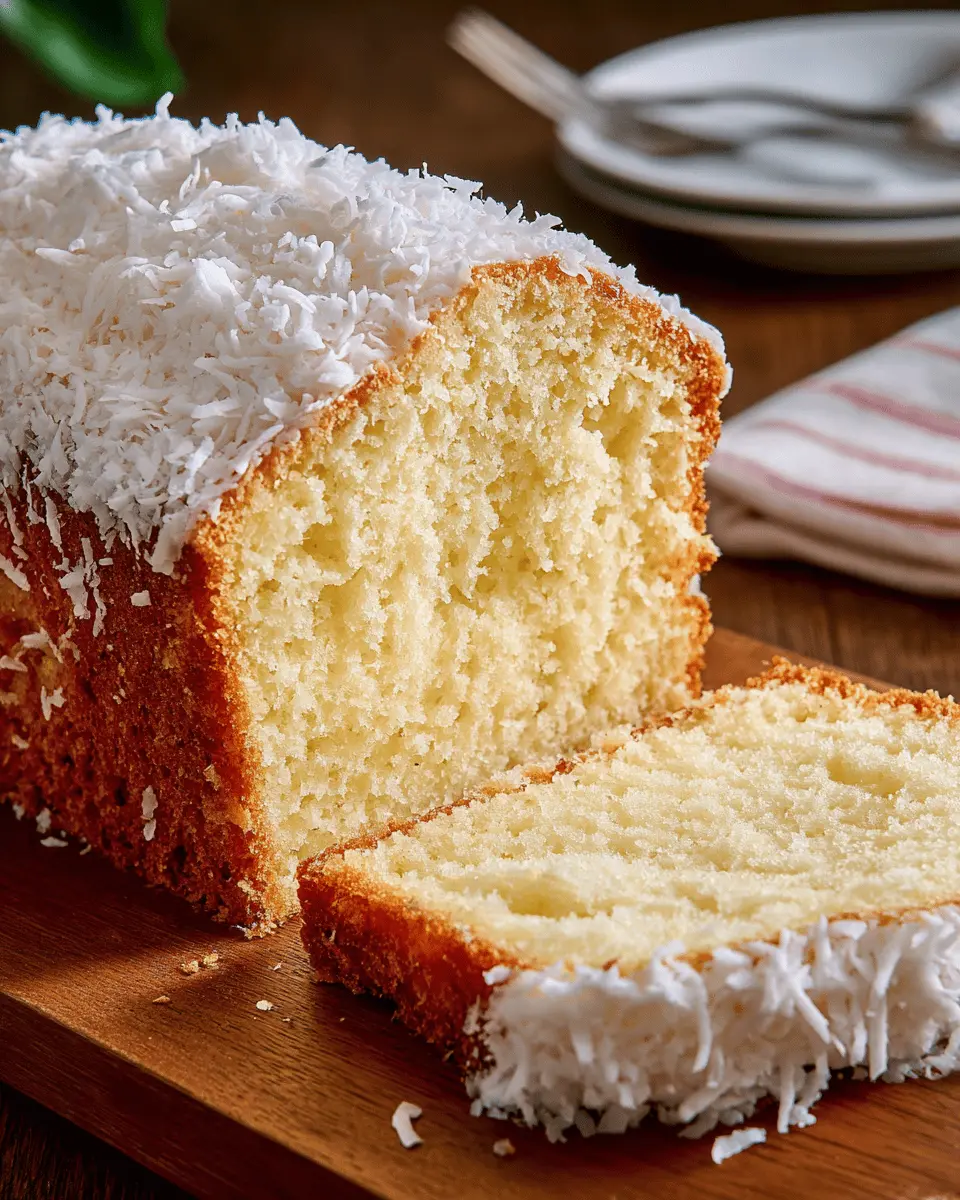
Ingredients for Coconut Pound Cake
When it comes to whipping up a delicious coconut pound cake, having the right ingredients on hand is crucial. Let’s break them down for you.
Essential Ingredients for the Batter
To create the rich, moist texture we all love in a coconut pound cake, you’ll need:
- Butter: 1 cup, softened to room temperature for easy mixing
- Sugar: 2 cups, granulated; this provides sweetness and helps to create that lovely crumb
- Eggs: 4 large, fresh eggs for the perfect rise
- All-purpose flour: 3 cups, sifted. This is your base!
- Baking powder: 1 teaspoon, to give the cake its lift
- Coconut milk: 1 cup for that authentic coconut flavor
- Shredded coconut: 1 cup, unsweetened for texture
If you’re curious about how coconut enhances flavor, check out this coconut benefits guide.
Ingredients for the Coconut Glaze
To add a softly sweet finish, you’ll make a simple coconut glaze with these ingredients:
- Powdered sugar: 1 cup, to sweeten the glaze without grittiness
- Coconut milk: 2-3 tablespoons, just enough to achieve your desired consistency
- Vanilla extract: 1 teaspoon for that extra kick of flavor
This glaze not only complements the coconut pound cake but also gives it a gorgeous shine. Have fun baking!
Preparing Coconut Pound Cake
Baking a coconut pound cake can be a delightful experience, filled with the aromatic scent of freshly toasted coconut and rich butter. If you’ve never tried making this dessert at home, you’re in for a treat! Let’s walk through the process together, step-by-step.
Preheat and prepare your baking pan
Before diving into the mixing bowl, it’s important to preheat your oven to 350°F (175°C). This ensures your cake starts cooking at the right temperature. Grease and flour a 9×5-inch loaf pan to make sure your delicious creation won’t stick when it’s time to remove it. You can also opt for parchment paper for added assurance and easy removal.
Cream together butter, oil, and sugar
In a large mixing bowl, take about 1 cup of unsalted butter, ½ cup of vegetable oil, and 2 cups of granulated sugar. Using a hand mixer or a stand mixer, cream these ingredients together on medium speed until the mixture becomes light and fluffy. This usually takes about 4-5 minutes. Creaming is key because it helps incorporate air into your mixture, which will give your coconut pound cake a lovely rise.
Add the eggs, one at a time
Now, it’s time to bring in the eggs! Crack four large eggs into a small bowl. This helps to catch any stray shells before they join your batter. Add them to the creamed mixture one at a time, making sure to beat well after each addition. This gradual process allows the eggs to incorporate fully, adding moisture and richness to your coconut pound cake.
Combine dry ingredients separately
Take a separate bowl and combine your dry ingredients: 3 cups of all-purpose flour, 1 teaspoon of baking powder, and a pinch of salt. Mixing these together beforehand helps ensure even distribution within your batter, preventing any clumps.
Mix dry ingredients with coconut milk
Gradually add your dry ingredient mixture to the wet mixture. Alternate the addition of 1 cup of coconut milk, mixing just until combined. Over-mixing can lead to a dense cake, and we want that perfect fluffy texture!
Stir in coconut extract and shredded coconut
For an extra boost of flavor, stir in 2 teaspoons of coconut extract along with 1 cup of sweetened shredded coconut. This addition really intensifies the coconut flavor and adds a nice texture to the final product.
Pour batter into the pan and smooth the top
Now it’s showtime! Pour the batter into your prepared loaf pan. Use a spatula to smooth the top, ensuring it is evenly distributed. An even surface helps your coconut pound cake to rise uniformly as it bakes.
Bake the cake to perfection
Place your loaf pan in the preheated oven and bake for 60-70 minutes. Keep an eye on it during the last ten minutes—oven temperatures can vary. You’ll know it’s ready when a toothpick inserted in the center comes out clean. Your kitchen will be filled with a mouthwatering aroma that makes waiting all the more challenging!
Cooling and glazing the cake
Once you’ve pulled out your cake, let it cool in the pan for about 15 minutes. This allows it to finish cooking and makes it easier to remove. After the initial cooling, gently remove the cake from the pan and transfer it to a wire rack to cool completely.
If you want to elevate your cake even further, consider glazing it with a simple mixture of powdered sugar and coconut milk. Just whisk them together until smooth and drizzle over the cooled cake for a beautiful finish.
Baking your own coconut pound cake can be incredibly rewarding! It’s perfect for gatherings or simply as a sweet treat for yourself. So grab your ingredients, roll up your sleeves, and enjoy the delicious process!
For more tips on cake baking and decorating, check out this comprehensive guide. Happy baking!
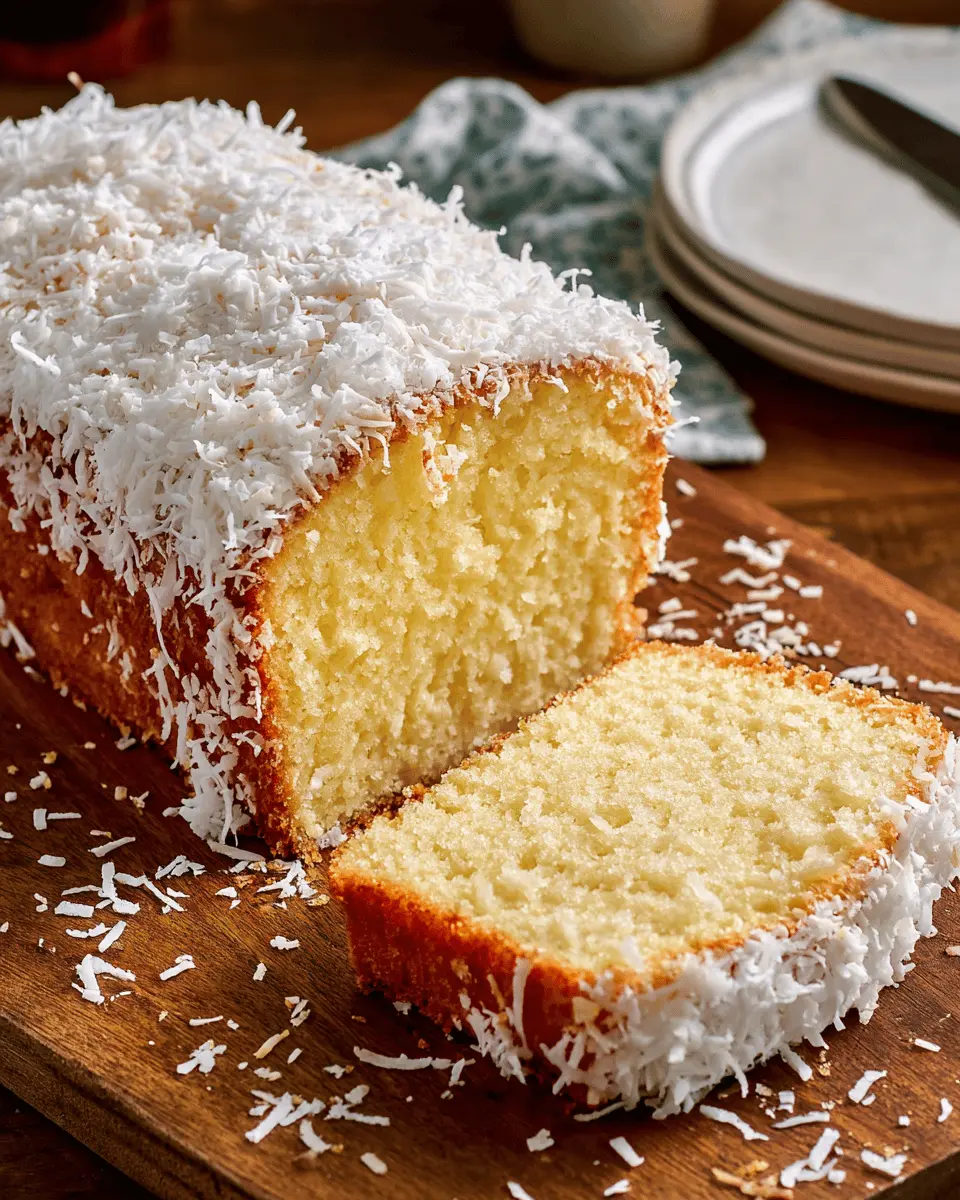
Variations on Coconut Pound Cake
If you love the rich, buttery flavor of coconut pound cake, you’re in for a treat. This cake is incredibly versatile, allowing for fun variations that can cater to your taste preferences. Let’s explore a few delightful adaptations!
Almond Coconut Variation
For a nutty twist on your coconut pound cake, try incorporating almond extract alongside the coconut. This variation brings a lovely depth of flavor. Here’s how:
- Adjust the Ingredients: Replace half of the vanilla extract with almond extract. Use sliced almonds as a topping for added texture.
- Pairing Suggestions: Serve with a cream cheese frosting that includes a hint of almond for a delightful mix.
Tropical Fruit-Infused Coconut Pound Cake
Transform your cake into a tropical getaway by adding fruits like pineapple or mango. They not only enhance the flavor but also provide a moist, vibrant texture.
- Incorporate Fruit: Mix in 1 cup of finely chopped fresh pineapple or mango. Drain excess juice to avoid a soggy cake.
- Garnish: Top with shredded coconut and serve with a side of coconut yogurt for a refreshing contrast.
Decadent Chocolate Coconut Pound Cake
Chocolate lovers, rejoice! A chocolate twist on your classic coconut pound cake can be heavenly. The combination of rich chocolate and coconut creates a dessert that’s hard to resist.
- Mix it Up: Add ½ cup of cocoa powder and an additional tablespoon of coconut cream into the batter.
- Perfect Finishing Touch: Drizzle with a chocolate ganache or sprinkle some chocolate chips for an extra decadent bite.
These variations allow you to experiment while keeping the essence of coconut pound cake. Remember, the options are endless! What flavors would you love to try?
Baking notes for Coconut Pound Cake
Importance of room temperature ingredients
When making a delicious coconut pound cake, using room temperature ingredients is essential. It ensures that your butter and eggs blend smoothly, creating a light, airy texture. Cold ingredients can lead to clumps of butter in your batter, impacting both rise and flavor. For the best results, take your eggs and butter out of the fridge about an hour before you start baking.
Toasting shredded coconut for added flavor
To elevate the flavors of your coconut pound cake, consider toasting the shredded coconut before mixing it into your batter. Toasting brings out the natural sweetness and adds a rich, nutty taste that enhances the overall profile of the cake.
- Spread the shredded coconut on a baking sheet.
- Bake at 350°F (175°C) for about 5-10 minutes, stirring frequently, until it’s golden brown.
This small step can make a huge difference! You can find more tips on coconut preparation on Serious Eats. Happy baking!
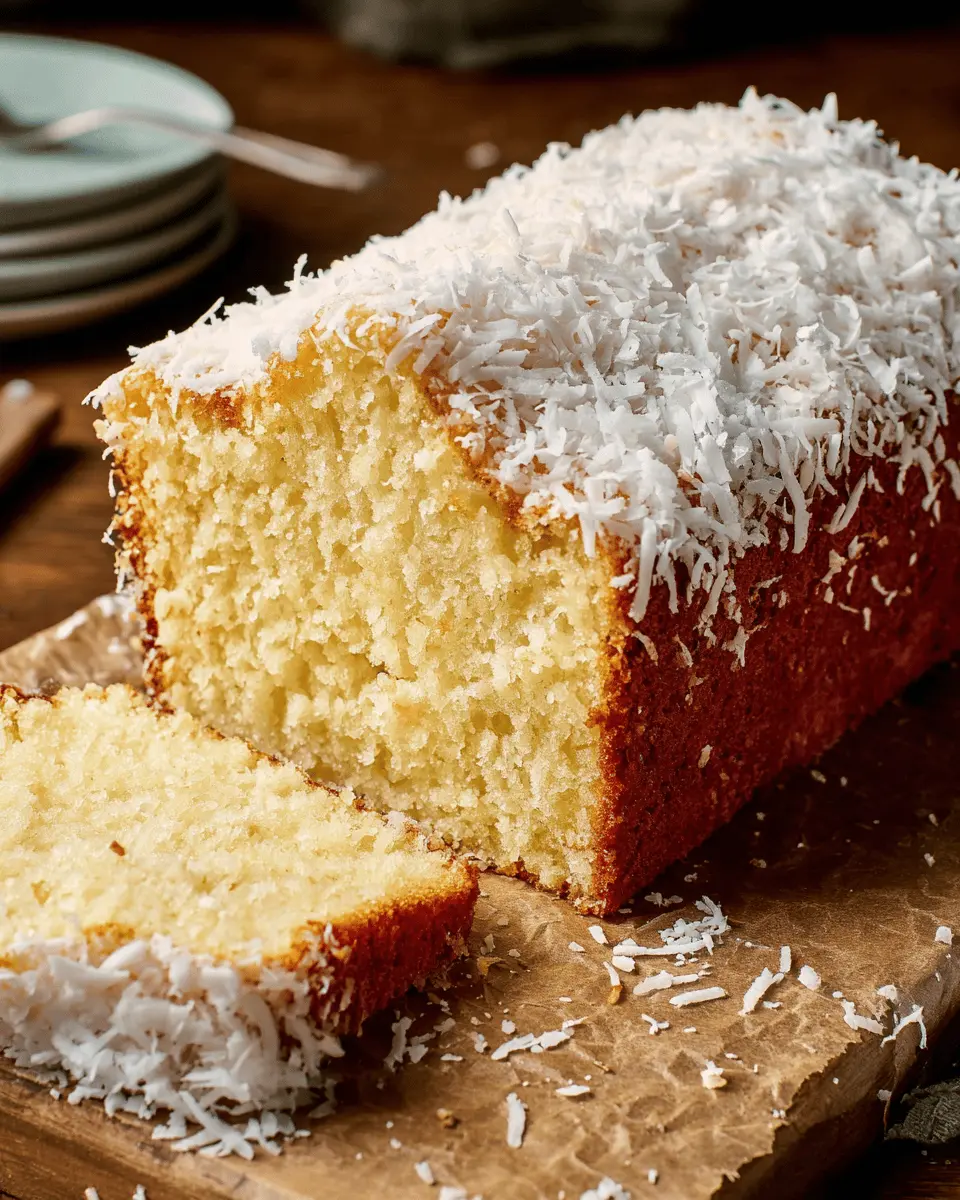
Serving suggestions for Coconut Pound Cake
Best accompaniments for coconut pound cake
Coconut pound cake is a delightful treat that pairs wonderfully with various accompaniments. One of the best combinations is a rich coconut cream frosting, which enhances the cake’s tropical vibes. You can also serve it with fresh fruit, such as sliced strawberries or pineapple, for a bright contrast. For a twist, consider a drizzle of homemade lemon glaze that adds a zesty brightness.
Another excellent option is to serve it alongside whipped cream or coconut whipped cream for an extra creamy touch. If you want to keep it simple, a dusting of powdered sugar can elevate its appearance while adding subtle sweetness.
Creative serving ideas for gatherings
When hosting a gathering, think about presenting your coconut pound cake in unique ways! Slice it into mini servings and arrange on a platter for an easy, shareable dessert. You could even create a dessert board with complementary items like fresh berries, toasted coconut flakes, and small bowls of sauces for dipping.
Looking to impress? Add a scoop of vanilla or coconut ice cream on the side for an indulgent treat that your guests will love. Your coconut pound cake will not only be a showstopper but also a delightful conversation starter! For more creative dessert ideas, check out Martha Stewart’s entertaining tips.
Tips for Making Perfect Coconut Pound Cake
Key Techniques for Batter Consistency
Achieving the right batter consistency is crucial for your coconut pound cake. Start by creaming your butter and sugar until the mixture is light and fluffy. This step introduces air, which helps create a beautiful rise. When adding eggs, do so one at a time; this helps maintain a stable emulsion, leading to a smoother batter. Make sure to gently fold in the dry ingredients and shredded coconut to avoid deflating the batter. You want it to be thick but pourable—like a soft ribbon.
For ultimate flavor, consider using fresh coconut if you can find it. Not only does it elevate the taste, but it also adds a delightful texture. If you need tips on using coconut in baking, check out this helpful guide from The Coconut Kitchen.
How to Check if the Cake is Baked Properly
So, how can you tell when your coconut pound cake is ready to come out of the oven? An excellent method is the toothpick test. Insert a toothpick into the center of the cake; if it comes out clean or with just a few crumbs, you’re good to go! Another sign is the cake’s edges pulling away slightly from the pan. Remember, if you overbake, you might end up with a dry texture, so keep a close eye on it during the last few minutes of baking.
With these tips, your coconut pound cake is sure to be a hit at any gathering! Happy baking!
Time details for Coconut Pound Cake
Preparation time
Getting started with your coconut pound cake is a breeze. You’ll need about 15 minutes to gather your ingredients and mix everything together. Make sure to measure out your flour, sugar, eggs, and, of course, the star ingredient—coconut!
Baking time
Once your batter is ready, pour it into your prepared cake pan and pop it into the oven. The baking time typically takes around 60 to 70 minutes. Keep an eye on it; the sweet aroma of coconut will be tempting!
Total time
By the time you finish, your coconut pound cake will take about 1 hour and 15 minutes to make from start to finish. Perfect for a weekend treat or even as a delightful dessert at your next gathering! Need some tips on cake storage? Check out this guide on how to keep your cake fresh.
Nutritional information for Coconut Pound Cake
Calories per serving
If you’re curious about the coconut pound cake, you’ll find that each delightful slice contains approximately 300 calories. This isn’t too surprising, considering the wholesome ingredients and the rich texture that come together to create this scrumptious dessert.
Nutritional breakdown
Understanding the coconut pound cake’s nutritional content is key for mindful eating. Here’s a quick breakdown:
- Sugar: About 20 grams
- Carbohydrates: Approximately 40 grams
- Fats: Roughly 15 grams
These figures can vary based on your specific recipe, especially if you tweak ingredients like using alternative flours or sweeteners. For those looking to indulge while keeping health in mind, consider a serving of fruit as a side or accompaniment, adding freshness and nutrients to your dessert experience. If you’re interested in healthier baking substitutes, check out resources from the American Institute for Cancer Research. Balancing treats like coconut pound cake with wholesome choices can make your dessert enjoyment guilt-free!
FAQs about Coconut Pound Cake
How can I ensure my pound cake is moist?
A great coconut pound cake should be deliciously moist and tender. Here are some tips to achieve that perfect texture:
- Butter and Sugar: Start by creaming the butter and sugar until light and fluffy; this incorporates air into the batter, which helps with texture.
- Add Liquid: Don’t skimp on any liquid ingredients like eggs and coconut milk. They add moisture, which is essential to a great cake.
- Don’t Overmix: After adding flour, mix just until combined. Overmixing can result in a dense cake.
For more baking tips, you might want to check out resources from King Arthur Baking.
What’s the best way to store leftovers?
If you find yourself with leftover coconut pound cake, don’t worry! Here’s how to keep it fresh:
- Room Temperature: If you plan to eat it within a few days, simply cover it tightly with plastic wrap or keep it in an airtight container.
- Refrigeration: For longer storage, place it in the refrigerator. Just remember to let it return to room temperature before serving; the flavors really shine that way.
- Freezing: You can freeze slices wrapped in foil or plastic wrap for up to three months. Thaw at room temperature when you’re ready to eat!
Can I substitute coconut milk in this recipe?
Absolutely! If you don’t have coconut milk, you can substitute it with whole milk or almond milk. While this will change the flavor somewhat, it’ll still yield a delightful coconut pound cake. If you want to maintain that coconut essence, mixing a little coconut extract with regular milk can work wonders.
For additional variations, explore substituting in resources like AllRecipes where they offer a wealth of creative cooking tips!
Conclusion on Coconut Pound Cake
Why you should try making coconut pound cake at home
If you’ve never tried baking coconut pound cake, you’re in for a delightful treat! Not only does making it at home allow you to customize the flavors, but the rich coconut aroma wafting through your kitchen is an experience in itself. This cake is perfect for gatherings or a cozy evening in.
- Simple Ingredients: With basic pantry staples, crafting this cake is a breeze.
- Perfect for Any Occasion: Whether it’s a birthday or just a Saturday treat, it fits right in.
Baking also offers a fantastic way to unwind after work. So why not grab a few coconut flakes and bring some tropical bliss into your day? For more baking tips, check out King Arthur Baking. You’ll find great resources that mirror this passion for home baking!
PrintCoconut Pound Cake: A Delightfully Moist and Indulgent Treat
This Coconut Pound Cake is a moist and indulgent dessert that’s perfect for any occasion.
- Prep Time: 20 minutes
- Cook Time: 60 minutes
- Total Time: 1 hour 20 minutes
- Yield: 1 loaf
- Category: Desserts
- Method: Baking
- Cuisine: American
- Diet: Vegetarian
Ingredients
- 1 cup unsalted butter, softened
- 2 cups granulated sugar
- 4 large eggs
- 1 teaspoon vanilla extract
- 1 teaspoon coconut extract
- 3 cups all-purpose flour
- 1 teaspoon baking powder
- 1/2 teaspoon salt
- 1 cup coconut milk
- 1 cup shredded coconut
Instructions
- Preheat oven to 350°F (175°C).
- Grease and flour a 9×5 inch loaf pan.
- In a mixing bowl, cream together the butter and sugar until light and fluffy.
- Add eggs one at a time, mixing well after each addition.
- Stir in vanilla and coconut extracts.
- In another bowl, whisk together flour, baking powder, and salt.
- Gradually add the dry ingredients to the batter, alternating with coconut milk until combined.
- Fold in shredded coconut.
- Pour the batter into the prepared pan and smooth the top.
- Bake for 1 hour, or until a toothpick inserted into the center comes out clean.
- Allow to cool in the pan for 10 minutes, then transfer to a wire rack to cool completely.
Notes
- For added flavor, consider using toasted coconut.
- Serve with a drizzle of coconut glaze for extra sweetness.
Nutrition
- Serving Size: 1 slice
- Calories: 300
- Sugar: 25g
- Sodium: 200mg
- Fat: 15g
- Saturated Fat: 10g
- Unsaturated Fat: 3g
- Trans Fat: 0g
- Carbohydrates: 40g
- Fiber: 1g
- Protein: 3g
- Cholesterol: 80mg
